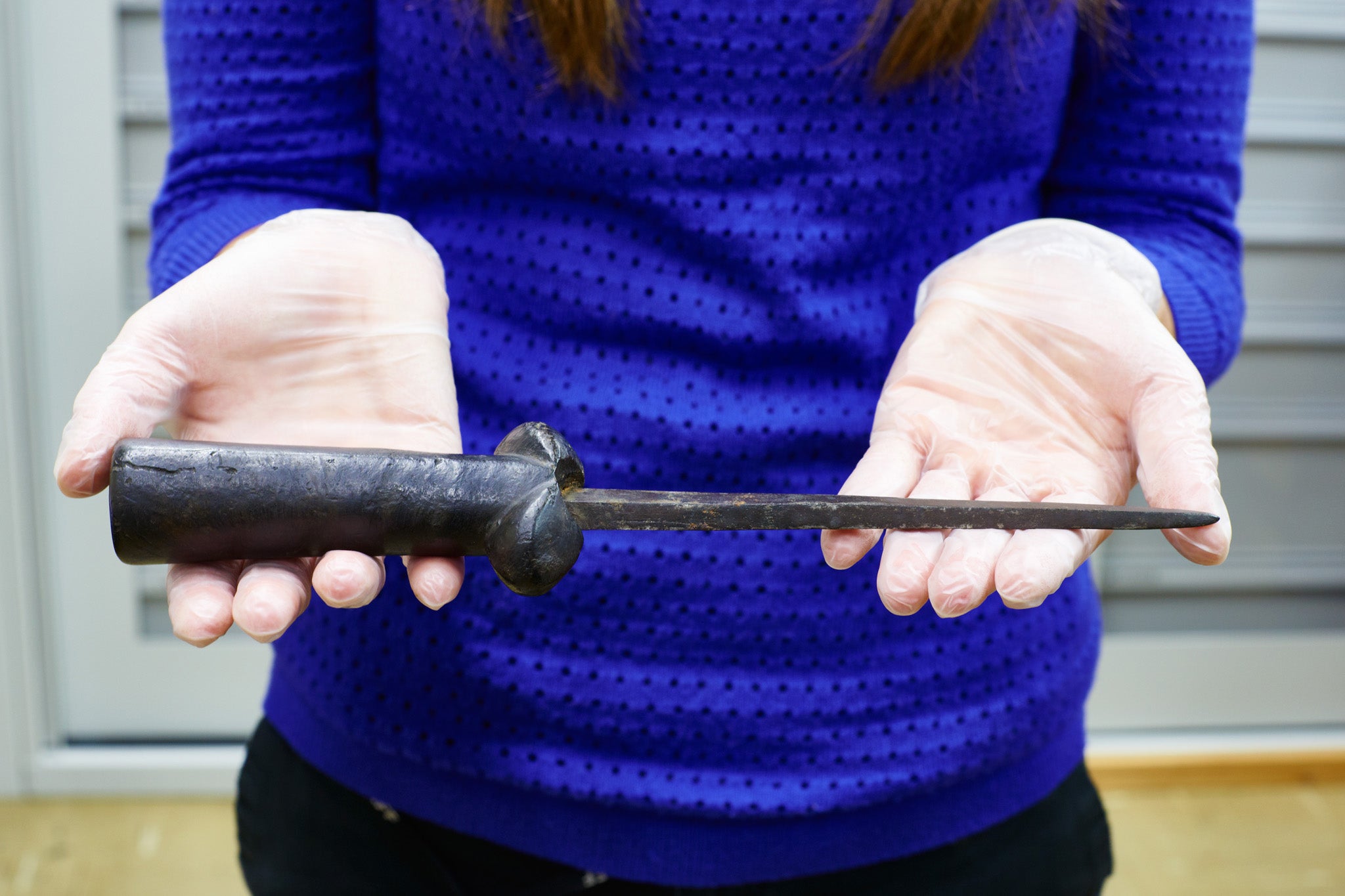RSC actors to carry authentic 'bollock daggers' in Henry IV productions
RSC artistic director Gregory Doran is known for his attention to detail

The Royal Shakespeare Company has gone the extra mile to recreate a rather painful-sounding prop for its major new production of Henry IV parts I and II.
RSC actors enlisted the help of the Museum of London to research little-seen objects of the period, culminating in commissioning their own authentic “bollock daggers” to carry on stage.
The weapon, so-called for the distinctive shape of its hilt with two ovals on it, was regularly carried by young men who frequented the taverns of Shakespearean London. The more prudish Victorians historians would later rename it a “kidney dagger”.
Shakespearean pisspots, daggers and stoneware
Show all 5Antony Byrne, who is playing Pistol in the RSC productions that open later this month, was so taken with the dagger when actors were given rare access to objects from the museum’s Metal Store, that he commissioned the theatre’s armoury to recreate it.
“The dagger represented a blokes’ social status and was a useful thing to have when things kicked off,” Roy Stephenson, head of archaeological collections at the Museum of London, said.
“An awful lot have been found in the river. Some because people would have been drunk and dropped them in, but another theory is it’s a disposal of evidence.”
Museum experts also helped the actors research the Bard’s local boozer, the Boar’s Head tavern which stood near London Bridge, allowing actors to immerse themselves in 16th century life - which would include unusual drinking games and piss pots.
The Boar’s Head features prominently in the plays, where Sir John Falstaff, Prince Hal – who is later crowned Henry V – and the Eastcheap Gang drink, are waited on by landlady Mistress Quickly.
Mr Stephenson believes Shakespeare drew his portrayal of the inn from his own visits on the way from his lodgings in Silver Street to the theatres on the south side of the river.
The pub was destroyed in the Great Fire of London in 1666 but was rebuilt and used as a drinking den until the late 18th century. Sadly, the site is now a traffic island in the middle of King William Street.
“There’s no real equivalent round here now,” Mr Stephenson said. “The closest is a Starbucks and I’m not sure Falstaff would have been happy with that.”
The RSC cast studied what the gang would have drunk and how, examining stone pint mugs made in the Rhineland and the “beardman jars” - also known as bellarmine jugs – which contained the alcoholic drinks. They would have drunk sack, a beverage similar to sherry, beer or claret.
Then, as Mr Stephenson said, there were the piss pots. “Maybe you’d go out in the yard maybe behind a curtain or even relieve yourself at the table.”
Other research involved drinking games that would have been played in the Boar’s Head. One actor was given the task of researching and coming up with versions his colleagues could play.
Snap-dragon, also known as Flap-dragon, involves a bowl of brandy with raisins which is then set on fire. The players then have to get as many raisons as possible out of the bowl and into their mouths. Another is called Shove Groat Shilling.
The RSC production, directed by Gregory Doran who is known for his meticulous attention to detail, will be in Tudor dress rather than costume reflecting fashions during Henry IV’s reign.
Subscribe to Independent Premium to bookmark this article
Want to bookmark your favourite articles and stories to read or reference later? Start your Independent Premium subscription today.

Join our commenting forum
Join thought-provoking conversations, follow other Independent readers and see their replies